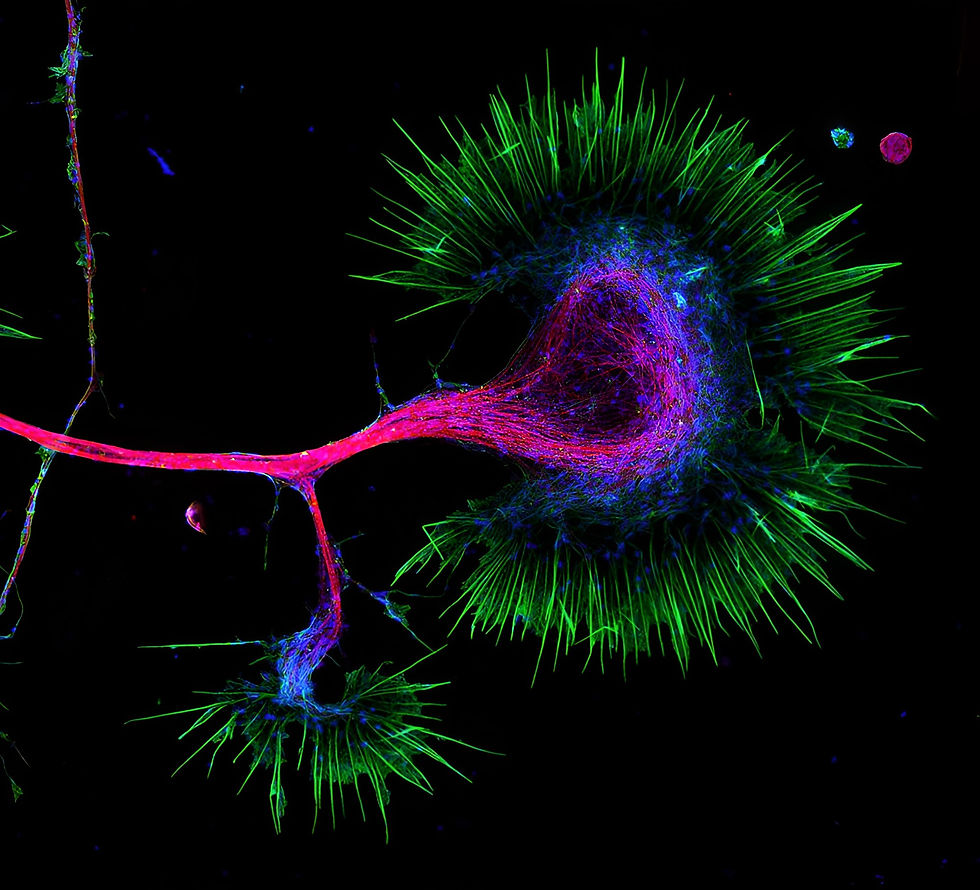Physiology
- gpq3gb06x64j
- Aug 24, 2022
- 1 min read
Physiology − adaptation is key
Physiology is centered around the analysis of the structure and function of cells and tissues. It combines disciplines such as (electro-)physiology, anatomy, and molecular biology.
Vastly different length scales have to be taken into account: from the whole organism, over tissues or organs, then individual cells, and – at the final level of resolution – intracellular features such as protein assemblies or organelles.
Light microscopy is one of the most important techniques for analyzing cells' and systems' structure, function, and interaction. Because the size of (sub-) cellular structures is often below the resolution limit of conventional light microscopy, super-resolution approaches like STED and MINFLUX nanoscopy are frequently used for physiology research.
Abberior offers several unique microscope features which facilitate imaging of fixed and living samples over extended time periods at the highest possible resolution:
Adaptive Optics for super-resolution tissue imaging at vast depths
MINFLUX imaging mode for resolutions down to 2 nm
MINFLUX single particle tracking with up to 10 kHz, i.e., 1 data point every 100 µs
Adaptive Illumination for super-resolution STED imaging at minimal light dosages
Year | Journal | Author | Title |
2012 | Cold Spring Harbor Protocal | Katrin I. et al. | |
2013 | Biophysical Journal | Kevin T. et al. | |
2013 | The Journal of Neuroscience | Deepak Nair et al. | |
2013 | Biophysical Journal | Philipp Bethge et al. | |
2014 | PHILOSOPHICAL TRANSACTIONS OF THE ROYAL SOCIETY | Aude Panatier et al. |



Comentários